As southern California re-stabilizes from two serious earthquakes on July 4 and 5, it may be sensible for us in southern Indiana to revisit some earthquake safety precautions. After all, Bloomington is situated near two significant fault lines: the New Madrid Seismic Zone and the Wabash Valley Seismic Zone. And although Hoosiers might not be too familiar with earthquakes (though some of us might remember the 5.2 magnitude quake in 2008—I know I sure do!), a letter from Edna Hatfield Edmondson shows how a group of Indiana University (IU) athletes handled a large quake back in 1922.
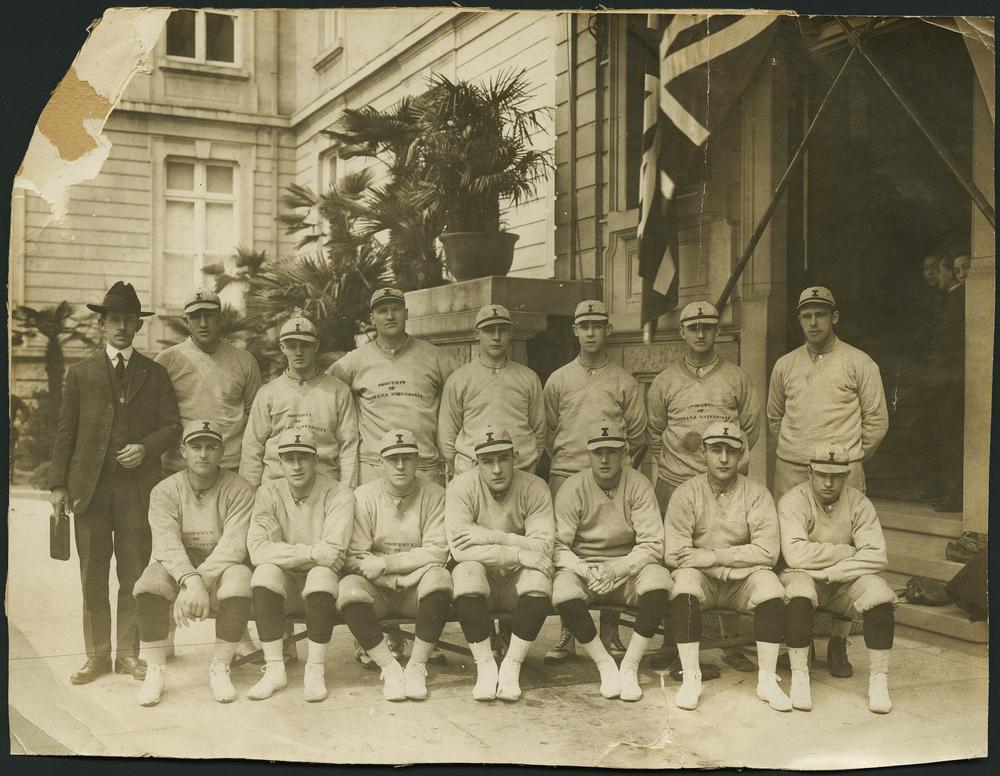
P0042249
Hatfield Edmondson served as a faculty member for the IU Extension Division from 1919-1942. She and her husband, Clarence Edmund Edmondson (a physiology and social hygiene professor and later Dean of Men at IU), chaperoned the IU baseball team during a landmark trip abroad to Tokyo, Japan from March-April, 1922. The University Archives is fortunate to have a collection of letters and postcards that Hatfield Edmondson wrote during this trip. Her letters include attentive recaps of games the baseball team played, descriptions of events to welcome the group in Tokyo, travelogues, and photographs. A particularly lively letter addressed to the IU Director of Publicity (Frank R. Elliot) on April 30, 1922 describes the team’s experience during a large earthquake (see the letter in its entirety at the bottom of this post). She begins:
“The Indiana baseball team is getting the worth of its money on this trip. All sorts of stunts have been staged for me—such as stormy seas, hotel fires, (and the Imperial Hotel was to have housed us but was too full—this we learned the day after our arrival).
Now an earthquake.
The earthquake did itself proud—the worst since 1894. For fear we might be disappointed it jolted us up and down, north and south, and east and west. We were quite “shaken up” by the incident.”
The 1894 quake to which she refers was indeed terrible. The 6.6 magnitude quake occurred on June 20, 1894 and affected downtown Tokyo, Kawasaki, and Yokohama. In addition to widescale physical destruction in these cities, it claimed 31 lives and injured 157 people. Japan has a long history of earthquakes because it is situated on four different lithospheric plates; as such, Japan’s written record of earthquakes goes back around 1,500 years. Fortunately for Edna and the team, this earthquake wasn’t nearly as bad. Her descriptions of how team members fared, however, illustrate how dangerous earthquakes can be in a city full of buildings:
“Lynch, Gilbert, Sloate, Gause, and Wichterman were upstairs in an ivory shop. The proprietor yelled “earthquake” and vanished. The boys rushed to the stairway and stuck there. Gilbert said they rattled around like dice in a box and opened up a new entrance to that shop trying to get out.
Coach, Mrs. Levis, Kidd and Minton were making a call on a Buddha in a temple at the time but lost confidence and deserted the shrine.
Walker was alone in his room on the third floor, waiting for the final blow before jumping along with the tiles from the roof.
Denny and Macer were playing billiards and were only a few jumps behind the Japanese who were playing with them, in getting into the open.”
Edna continues to describe how she and her husband dealt with the shaking, all the while showing her sense of humor about the event:
“Mr. Edmondson and I looked across the table in our room at each other, laughed, then opened up our eyes, rose as one man and found ourselves at the window ready to slide down a telephone pole.”
We know now that proper earthquake safety procedure is to drop onto your hands and knees, cover your head and neck, and hold on to something sturdy. Edna’s jape about sliding down the telephone pole would in fact have been a very dangerous thing to do! The next two players she accounts for experienced firsthand the scary physical consequences of the quake (still with Edna’s trademark sense of humor):
“Clay has always believed his number elevens were a firm
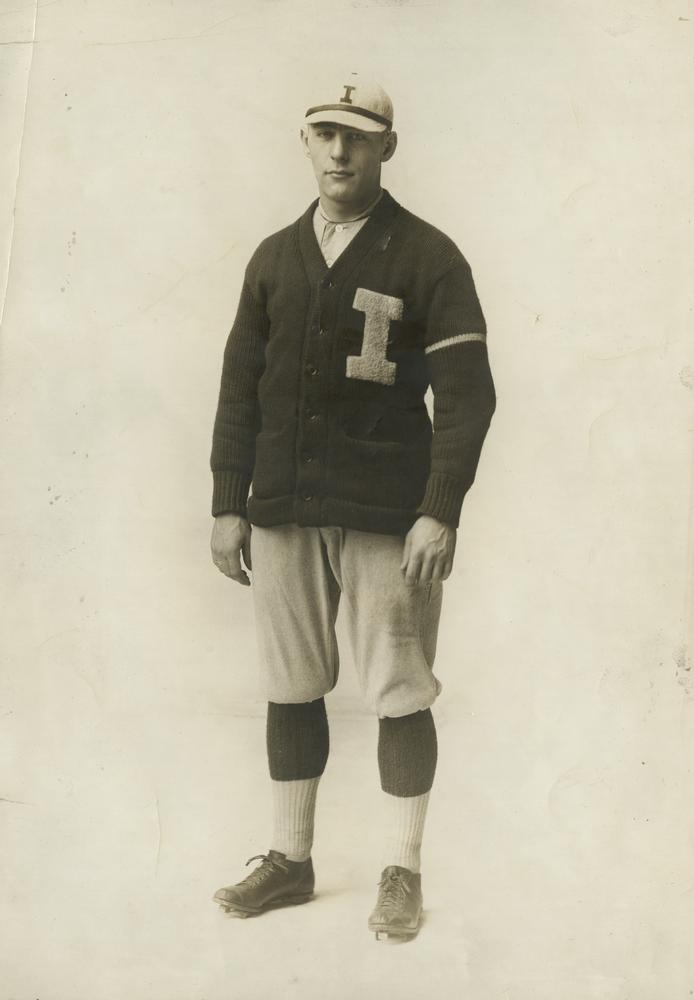
foundation until he saw the sidewalk meeting him in all directions, where he lost confidence.
Kight was shaken out of a sound sleep and came to in the middle of the street—he doesn’t know whether he reached the street by fair means or foul.”
Edna ends her account on a more positive note, describing team member Leonard “Ruck” Ruckleshaus’ bravery:
“Ruckleshaus proved himself the only hero in the crowd by rescuing a beautiful young lady. Trust Ruck!”
We can see the impact the baseball team had on the local community! None of the team members were injured, and in fact they went on to play their next game in the series on May 2. Although the IU team lost more games than they won (the final series record was one victory, one tie, and five losses) they had many thrilling experiences. Aside from the earthquake, they experienced Mount Fuji, the largest tea house in Japan, and the Tokyo Imperial Palace. You can view many images of the team’s Japanese tour in our database.
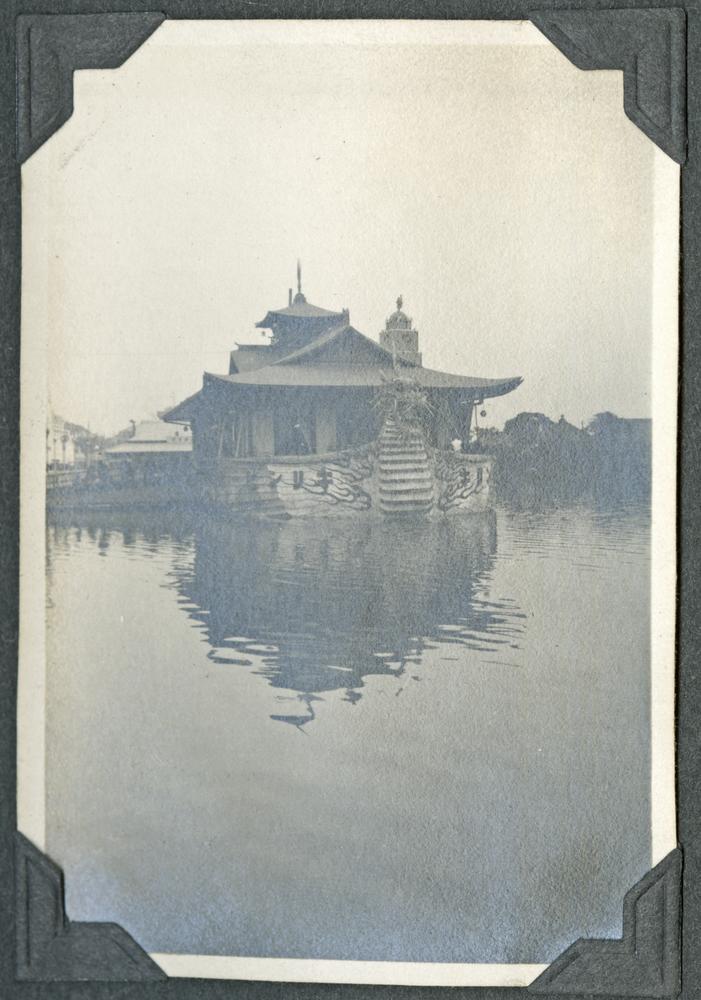
In the end, it was fortunate timing for Edna and the IU team to experience a Japanese earthquake in 1922. In September 1923 the Great Kanto Earthquake struck the nation and left a devastating path of destruction, killing 140,000 people in resulting fires, floods, and physical destruction. The event is a chilling testament to the tragic potential of earthquakes.
On a more positive note, you can learn more about the IU baseball team’s trip to Japan in multiple places. Be sure to check out previous blog posts here and here, the Edna Hatfield Edmondson correspondence collection (C705), and the Leonard C. Ruckelshaus papers (C519). Both the Edmondson and Ruckelshaus collections are digitized for your perusal. If you have further questions, be sure to contact an archivist.
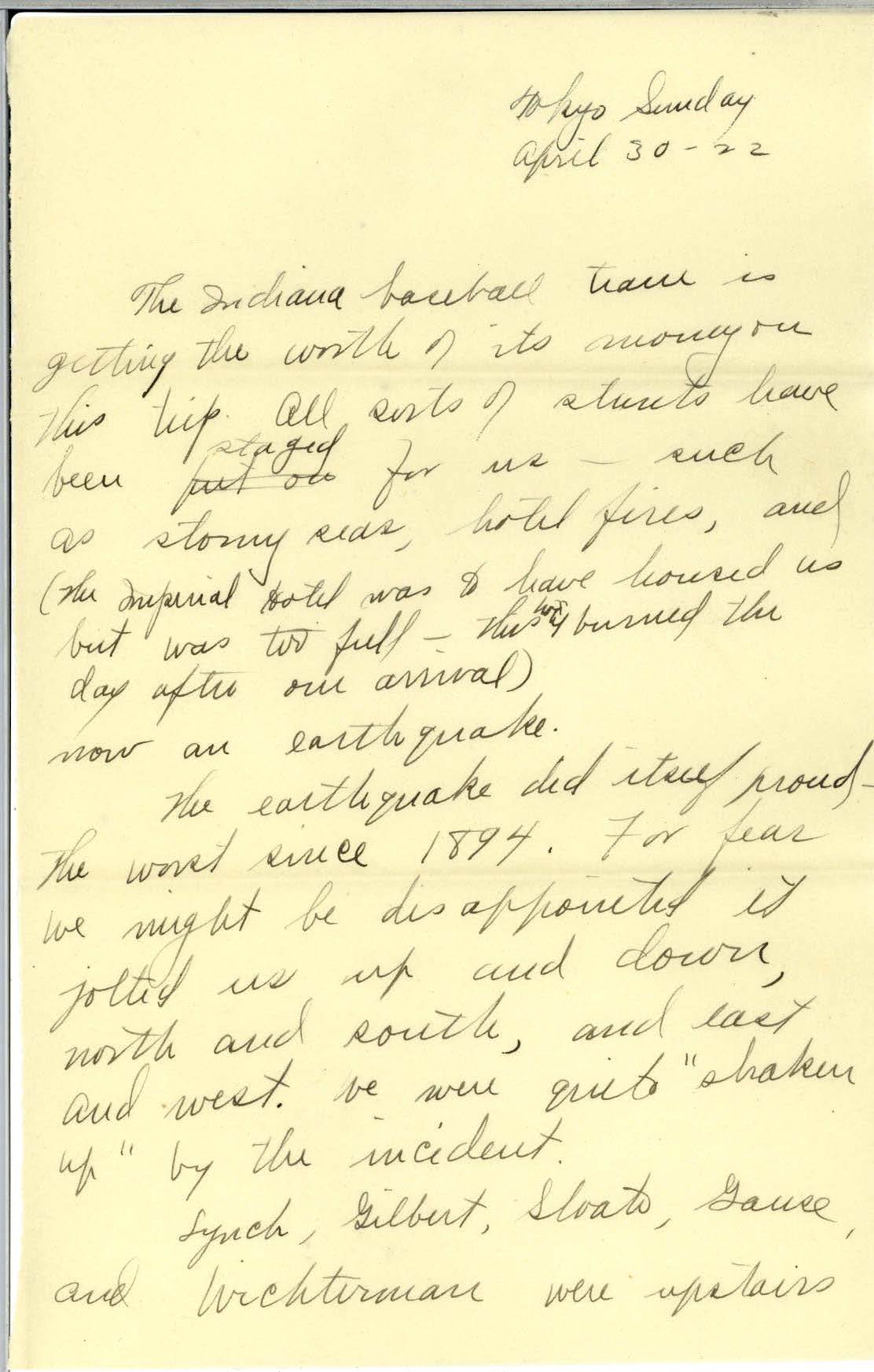



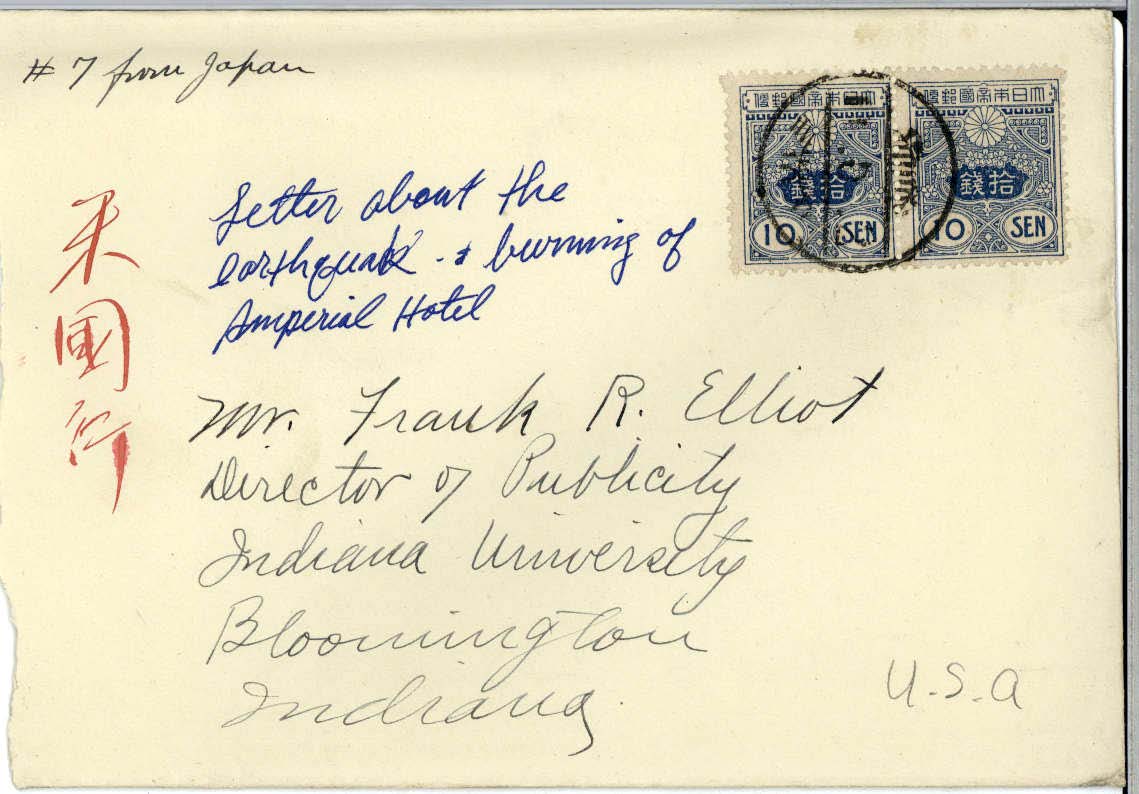
Leave a Reply